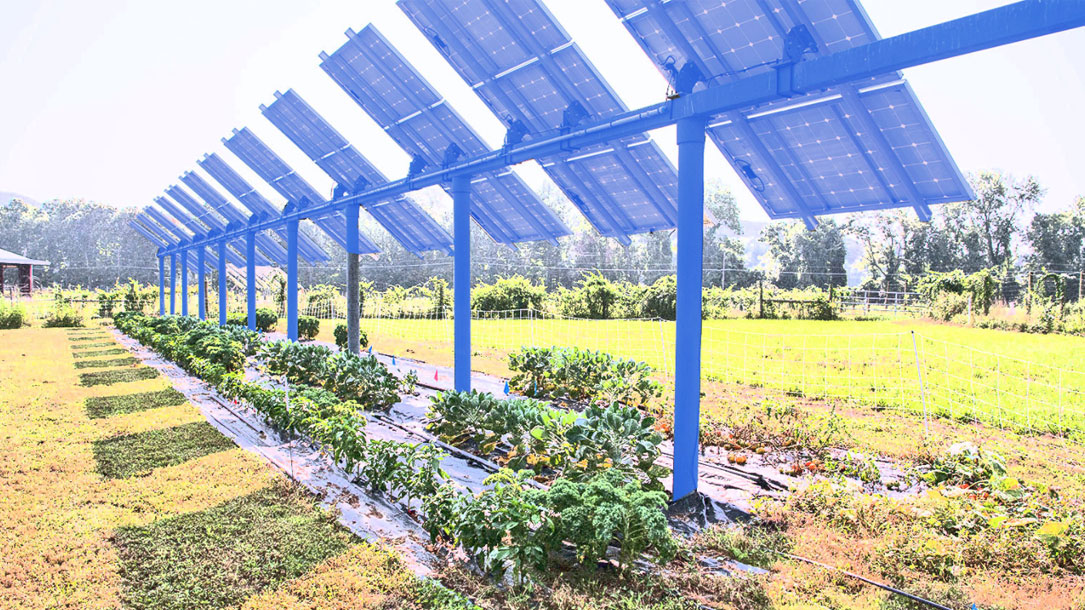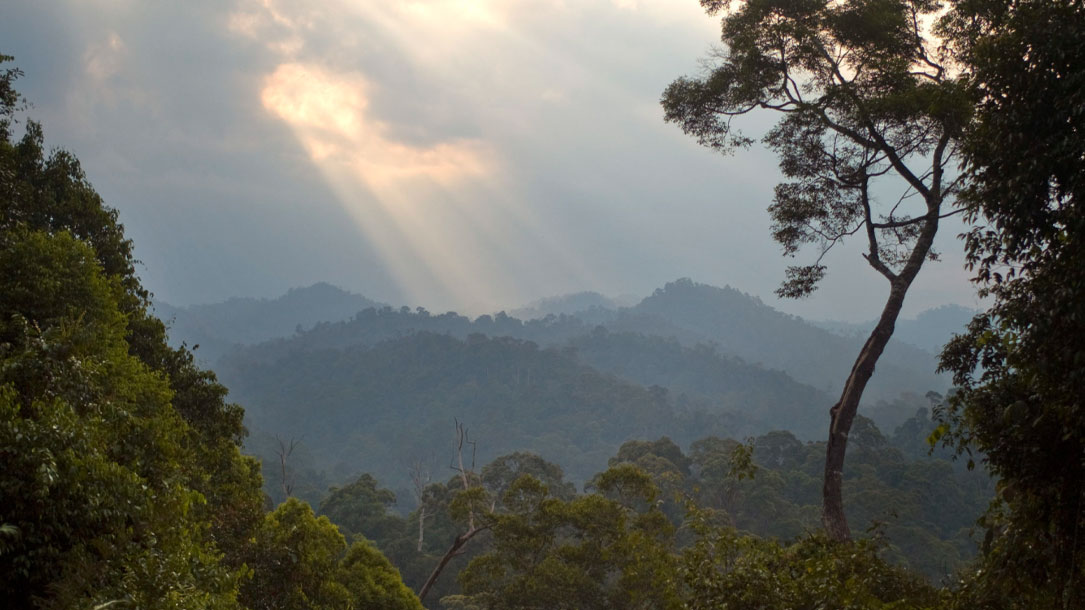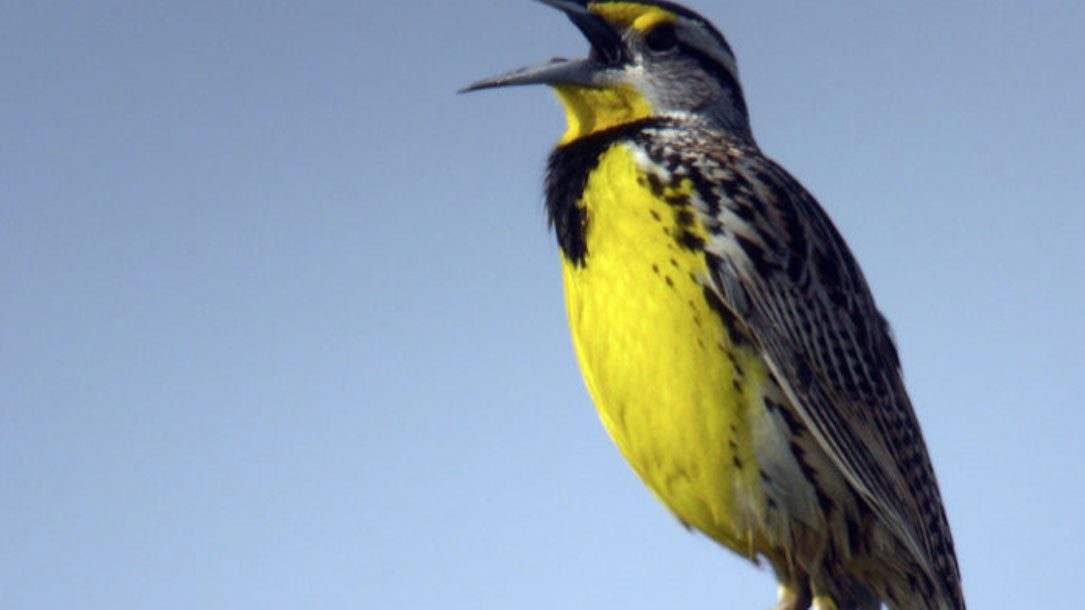Home > Climate News >

Cash-strapped farms are growing a new crop: solar panels
Construction is slated to begin this spring on a 1.2-megawatt solar array on the Kominek farm (in Colorado). Some 3,300 solar panels will rest on 6-foot and 8-foot-high stilts, providing shade for crops like tomatoes, peppers, kale, and beans on a five-acre plot. Pasture grasses and beehive boxes are planned for the perimeter…
The vegetables will be sold through a community farm-share program, which allows neighbors to invest in the project in exchange for boxes of produce.
Byron Kominek said he hopes similar projects will soon follow. In 2018, Boulder County officials updated the local land-use codes to allow for community solar on land otherwise designated for agriculture, and Kominek plans to help train other farmers how to grow crops alongside solar panels. “The hope is that young farmers will have a better understanding of how to do this, and will go out to already built solar arrays, or planned solar arrays, and find a new profession,” he said.

What ballooning carbon emissions will do to trees
More scientific research could help to predict whether carbon-dioxide fertilization will safeguard the carbon sink, slowing the advance of climate change, or do “diddly.” But neither of the two countries best poised to conduct necessary studies—the United States, with its large science budget, and Brazil, which occupies the majority of the Amazon—seems likely to sponsor such research.

Climate change is transforming Western forests. And that could have big consequences far beyond wildfires.
The heat of a warming planet, like an artist’s palette knife on a canvas, etches its way across Western forests, slowly altering ecosystems that have flourished for centuries…
“As ecosystems change, there are going to be winners and losers,” said Thomas Veblen, a biogeographer and distinguished professor at the University of Colorado. “The regulator function of the forest could diminish…leading to more runoff and flash floods. With a reduction of the forest canopy, we are going to see the potential for greater erosion. The question is how much of the forest will fail to regenerate.”

Nature’s sleeping giant
Climate change is a global problem, and it requires solutions on a global scale. One of those is hiding in plain sight. Our lands provide an untapped opportunity – proven ways of both storing carbon and reducing carbon emissions in the world’s forests, grasslands and wetlands: natural climate solutions.
Natural climate solutions can help address climate change in three ways:
- Reducing greenhouse gas emissions, such as carbon dioxide (CO2), related to land use and changes in land use
- Capturing and storing additional carbon dioxide from the atmosphere
- Improving resilience of ecosystems, thereby helping communities adapt to the increase in flooding and dry spells associated with climate change…

Climate Change: Atmospheric Carbon Dioxide
“In fact, the last time the atmospheric CO2 amounts were this high was more than 3 million years ago, when temperature was 2°–3°C (3.6°–5.4°F) higher than during the pre-industrial era, and sea level was 15–25 meters (50–80 feet) higher than today.
Carbon dioxide concentrations are rising mostly because of the fossil fuels that people are burning for energy. Fossil fuels like coal and oil contain carbon that plants pulled out of the atmosphere through photosynthesis over the span of many millions of years; we are returning that carbon to the atmosphere in just a few hundred years…”

Climate change contributes to widespread declines among bumble bees across continents
“One aspect of climate change is an increasing number of days with extreme heat. [Research scientists] analyzed a large dataset of bumble bee occurrences across North America and Europe and found that an increasing frequency of unusually hot days is increasing local extinction rates, reducing colonization and site occupancy, and decreasing species richness within a region..”

Extreme wildfires threaten to turn boreal forests from carbon sinks to carbon sources
“A research team investigated the impact of extreme fires on previously intact carbon stores by studying the soil and vegetation of the boreal forest and how they changed after a record-setting fire season in the Northwest Territories in 2014. They collected 200 soil samples and used radiocarbon dating to estimate the carbon age. They found combustion of legacy carbon in nearly half of the samples taken from young forests (less than 60 years old)…”

Scientists are racing to figure out why this giant glacier in Antarctica is melting so fast
“A robotic submarine is about to descend into a dark, water-filled cavern in Antarctica, to try to find out why one of the continent’s largest glaciers is melting so fast.
In the next few days, scientists will lower the torpedo-shaped robot, dubbed Icefin, into a nearly 2,000-foot-long (600 meters) borehole in the ice of Thwaites Glacier in West Antarctica. Previously, scientists used Icefin robots to study the sea life beneath the ice in the Ross Sea off of Antarctica, but this new project has a different purpose…”

The mystery of why 2.9 billion birds have disappeared from the US in 50 years
“The news dropped like a bombshell. Over the past 50 years, 2.9 billion birds have disappeared from North America. One out of every four birds is gone. A team of international scientists under the auspices of the Cornell Lab of Ornithology analyzed the data and released their findings this summer. What on earth happened?
It’s complicated. The simplest answer is that humans just take up a lot of room. Fifty years ago, the U.S. population barely topped 200,000,000. Nowadays, there are more than 329,000,000 of us…”

Farms and Land in Farms 2018 Summary (April 2019)
“The number of farms in the United States for 2018 is estimated at 2,029,200, down 12,800 farms from 2017. Total land in farms, at 899,500,000 acres, decreased 870,000 acres from 2017. The average farm size for 2018 is 443 acres, up 2 acres from the previous year.
Farm numbers and land in farms are differentiated by six economic sales classes. Farms and ranches are classified into these six sales classes by summing the sales of agricultural products and government program payments. Sales class breaks occur at $10,000, $100,000, $250,000, $500,000, and $1,000,000. Producers were asked during the 2018 mid-year surveys to report the value of sales based on production during the 2017 calendar year…”












